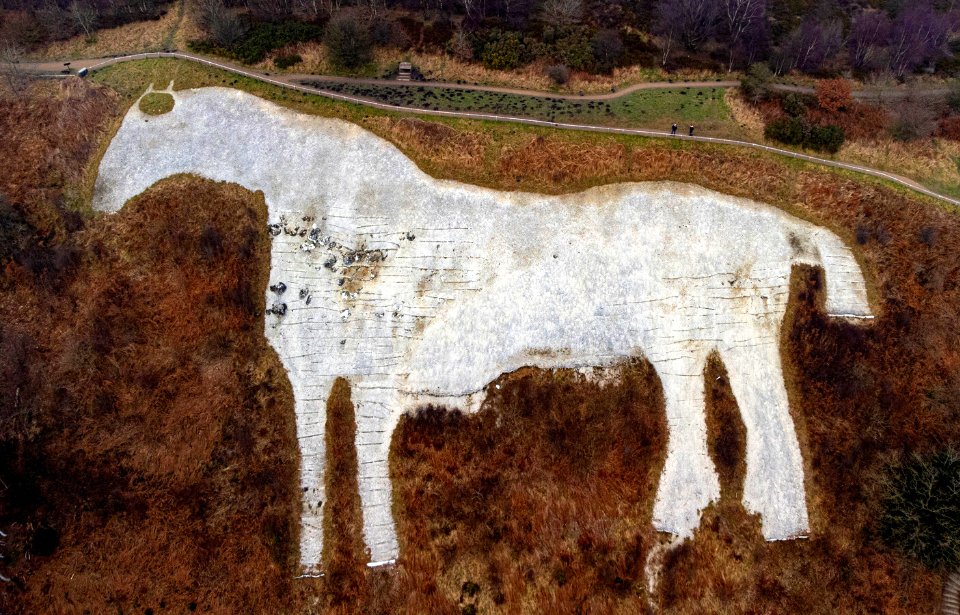Carved into the hilly countryside of Britain are several huge figures that stand out among the lush green grasses thanks to the white layer of chalk that fills their carved lines. Although most of the figures are depictions of horses (16 to be exact), some human figures have also turned up on the hillsides. A lack of definitive evidence makes most of their origins unclear, though they have become tourist hotspots that many people add to their itineraries when traveling to the UK.
What are the chalk figures?
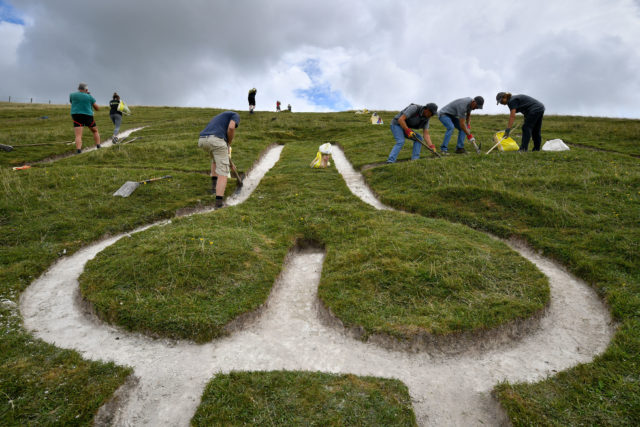
Several massive horse and human-shaped figures are etched into the British hillsides. They were created by carving away the top layer of the grassy hills to reveal the natural rocky underside. Often, a layer of some kind of brighter material, typically chalk, is placed on top to make their appearance even more noticeable.
These varied figures have become a significant part of Britain’s landscape. The practice of carving the figures seems to have been most popular during the 17th and 18th centuries, though some have been dated to the late Bronze and early Iron Ages.
Uffington White Horse
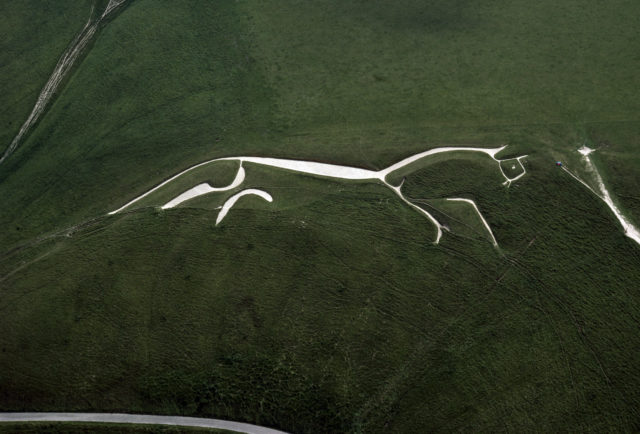
The Uffington White Horse is 360 feet long and is located on the upper slopes of White Horse Hill, located not far from the towns of Faringdon and Wantage. It’s a more modern-looking figure, though its creation has been dated as far back as 550 BC. It is known as the oldest of the white horse figures in Britain and is the only one created in such a unique and minimal style.
Westbury White Horse
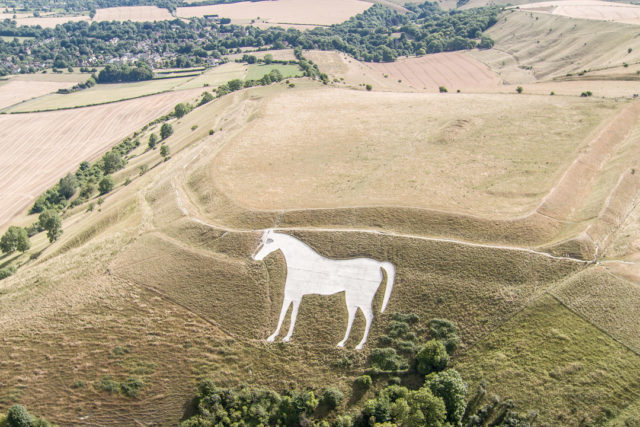
The Westbury White Horse is 180 feet tall and is located just below the site of the Bratton Camp Iron Age hillfort at Wiltshire. Legend says that it was carved following King Alfred’s victory at the Battle of Ethandun here in 878, but there is no conclusive evidence to prove it. It’s more likely to have been carved in 1772 as was recorded in a contemporary engraving.
Osmington White Horse
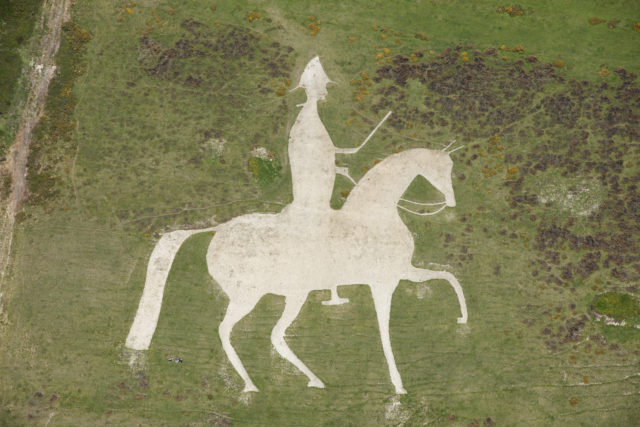
The Osmington White Horse was cut into the hill north of Weymouth in Dorset in 1808. It is 280 feet long and 323 feet high. Different from the other white chalk horses, this one depicts a man astride the horse. The figure is meant to represent King George III riding his famous steed, Adonis, on his way out of Weymouth. He was a regular visitor to the area.
Kilburn White Horse
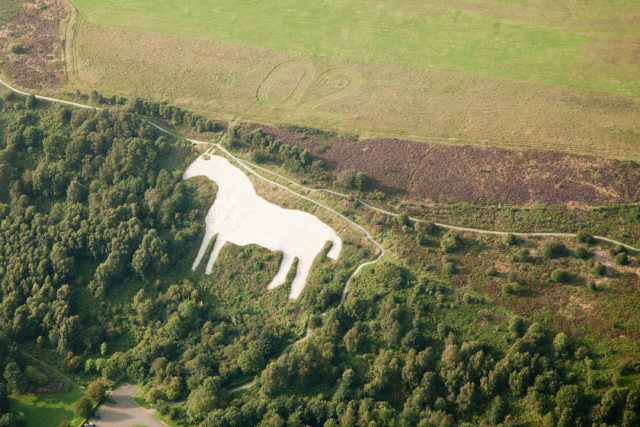
The Kilburn White Horse is cut into the hillside in North York Moors National Park and was commissioned by local resident Thomas Taylor in 1857. The story goes that he was inspired following his visit to Uffington and wanted to recreate that kind of monument in his own town. The figure is 318 feet long by 220 feet high and is believed to be the largest hill figure in England.
Bulford Kiwi
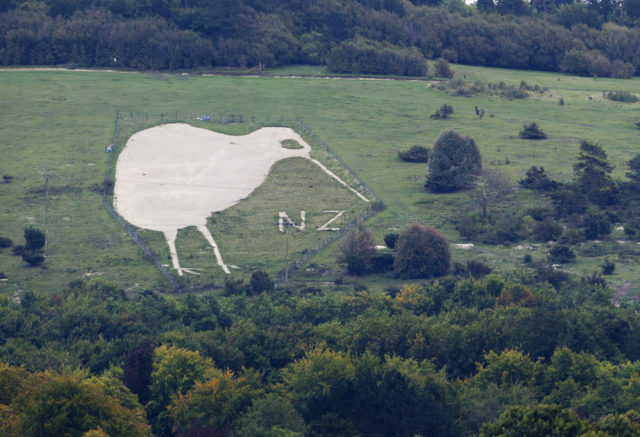
The Bulford Kiwi is arguably the strangest of the white chalk figures and is carved on Beacon Hill in Wiltshire. The bird is 460 feet wide and 420 feet high. It was carved in 1919 by New Zealand Expeditionary Force soldiers while they awaited ships to take them home following the end of the First World War. Supposedly, ships took too long to arrive, and in an effort to quell riots caused by upset soldiers, their commanding officers ordered them to dig out the enormous kiwi bird.
Cerne Abbas Giant
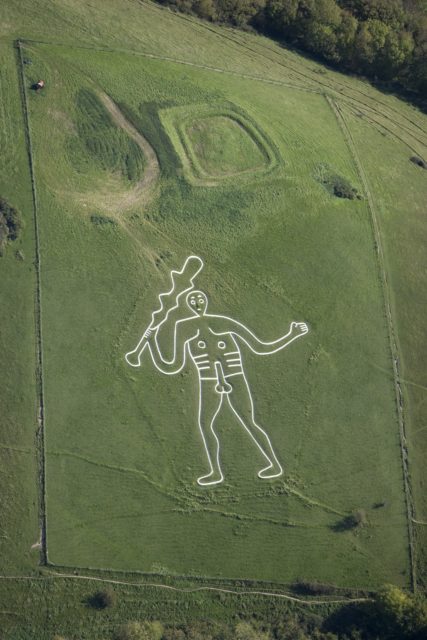
The Cerna Abbas Giant, also known as the “rude man,” is one of two human-like figures. It’s carved near the village of Cerne Abbas in Dorset. This figure is an anatomically exaggerated 180-foot-tall naked man who’s holding a club. Its origin is unclear, as some scholars believe that the figure is dated from the 17th century, while others believe that the figure dates as far back as 700-1110 CE.
Long Man of Wilmington
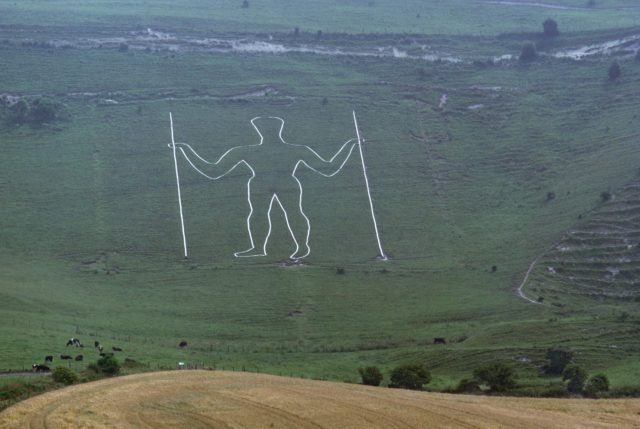
More from us: Dunmore Park and Its Pineapple House in Airth, Scotland
The Long Man of Wilmington is carved into the steep Windover Hill located near Wilmington. The figure is 235 feet tall and is holding two long, narrow strips. For a long time, it was believed that the figure was carved during the Iran Age, but archaeological investigations have suggested that it more likely originated in the 16th and 17th centuries. The oldest known depiction of the figure was made by surveyor John Rowley, who drew an image of it in 1710.
